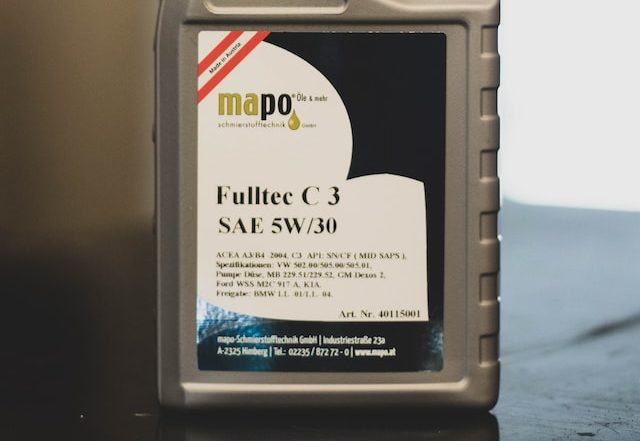
Cargroot is reader-supported. When you buy through links on our site, we may earn an affiliate commission.
Yes, you can mix 10w30 and 5w30 engine oil. Although 5w30 is less dense, their viscosity is similar, and their combination is perfect. If you use 10w30 regularly in your car, you won’t notice any difference in performance when switching to 5w30 for short trips. Here’s a look at 10w30 and 5w30 and how they affect your engine.
You can also check this video that explains the difference between 5w30 and 10w30 oils.
What Are 10w30 and 5w30 Oils?
10w30 means that the oil rating is at 10W when the engine is cold and is rated at 30 when the engine gets hot. Similarly, 5w30 is rated at 5W when the engine is cold and at 30W when the engine gets hot.
5w30 is ideal for private vehicles and is perfect for people living in cold temperatures. 10w30 is ideal for commercial vehicles and provides better lubrication.
How Does Engine Oil Benefit Your Vehicle?
Engine oil is a lubricant that helps keep your vehicle running smoothly. It’s an oil that reduces friction between moving parts, so it helps keep things running smoothly and prevents damage to your engine.
Generally speaking, engine oil comprises two major components – additives and friction-reducing agents. The additives help break down carbon deposits that build up in the engine over time, while the friction-reducing agents help reduce wear on moving parts and keep them from becoming damaged or worn out.
What Is the Difference Between 5w30 and 10w30?
The main difference between 5w30 and 10w30 engine oil is how dense they are at low temperatures. The higher the viscosity, the thicker the oil will be and the longer it will take for it to get warm enough for your engine to start working properly.
5w30 is recommended for lighter vehicles cars. It has a lower viscosity than 10w30 and is ideal for vehicles that run in low-temperature areas.
How To Mix 10w30 and 5w30?
Mixing 10w30 and 5w30 oils is a simple process that anyone can do. It’s really just a matter of understanding the proper method. You first need to pour in the lighter oil, which is 5w30. Once you’re halfway through, you can pour the heavier 10w30 oil.
What Happens When You Mix 5w30 with 10w30?
When you mix 5w30 with 10w30, you get a thicker, more viscous oil that can be used in many different ways. The oil’s viscosity depends on the friction or shear that occurs during the mixing process. Viscosity also depends on temperature, pressure, and additives.
The higher viscosity of the 10w30 means that it will take longer for this oil to flow through small pipes and openings. This means that you can use this blend for low-pressure applications like fuel lines where there is less risk of spillage than there would be with other oils.
Are You Allowed To Blend Two Different Oils In Weight?
You can blend two different engine oils in weight as long as it is done under expert supervision.
Why Are Drivers Likely to Blend Motor Oils?
Drivers are likely to blend motor oils because of the number of factors that can affect the performance and longevity of their engines. For example, motor oil manufacturers recommend using different types of motor oils for different conditions (i.e., cold weather, hot weather, etc.) to help prevent engine wear and tear.
But what about when one type of oil doesn’t work for all conditions? If your car’s manual says that you should use a certain type of oil for all kinds of conditions, but it doesn’t seem to be working well – maybe it’s too cold or too hot – you may want to consider using another type of oil altogether.
Blending motor oils is an excellent way to ensure that you’re using the right type at all times – and it can save you money in the long run.
What Happens if You Mix Two Different Engine Oils?
If you mix two different engine oils, you can expect to see some side effects. The first one will be that the oil that is mixed with the other will have a higher viscosity than the original one. This means it will take more time to start moving through the engine.
Additionally, mixing two different types of oil can cause a buildup of sludge in your engine’s carburetor or fuel injectors. This means that they won’t work as well and maybe not at all. The buildup will also cause an increase in wear on these parts.
If you continue to use these oils together, eventually, your engine will experience problems with them being incompatible with each other and causing damage to your car’s engine components, including piston rings, pistons, and cylinders, among others!
Conclusion
5w30 and 10w30 are both high-quality oils, but they have different properties that make them better suited for certain uses. It depends on which vehicle you drive and where you live. As mentioned above, 5w30 is ideal for colder temperatures and lighter vehicles. 10w30 is perfect for heavier commercial vehicles.



![[Solved] Car Shaking in Reverse – Why & How to Fix It?](https://cargroot.com/wp-content/uploads/2023/03/giorgio-trovato-gBF0CCP_Qy0-unsplash-100x70.jpg)


